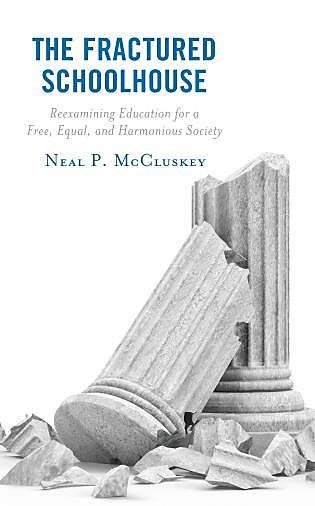Schools closed to in-person education. Mask mandates after schools opened. Critical race theory. LGBTQ issues. Book challenges…
Battles over public schools have been especially heated over the last couple of years, and discontent has fueled big increases in alternatives to public schooling. This has many people worried, fearing that a crucial, unifying American institution is being undermined.
Certainly the intent of many public schooling advocates has been to unify diverse people. But often defense of public schooling ends there – intent – and not reality. It is reality that I tackle in my new book, out today: The Fractured Schoolhouse: Reexamining Education for a Free, Equal, and Harmonious Society.
Instead of unifying diverse people, public schooling has often fomented deeply personal conflict, because to get what one group wants often means having to keep the other from getting its desire. It is the inescapable nature of diverse people, one school.
Our present-day battles over critical race theory, graphic novels in school libraries, and more are just the latest such conflicts. The Fractured Schoolhouse goes over many others, from intra-Protestant tiffs in the early days of common schooling, to widespread Catholic dissent, to conflicts over the German language, to busing. Battles over values and identity have always been a part of public schooling.
The book also discusses why we haven’t seen more conflict: For much of the time and in many places public schools did not bring diverse people together. Districts have tended to serve small, homogeneous communities, allowing public schooling to be tailored to specific groups. That has been eroded over many decades as districts have been consolidated and federal and state governments have asserted more control, but people are still typically assigned to public schools based on their home addresses, and people tend to live with others like themselves.
Of course, public schooling also did not unify diverse Americans because in many places the system de jure segregated African-Americans until Brown v. Board of Education in 1954, and de facto segregated long after that. Other racial and ethnic groups were also sometimes intentionally segregated.
So maybe public schooling hasn’t been a unifying force. But it is essential to democracy, right?
We hear this often, but rarely with a rigorous definition of “democracy” or much hard evidence that public schooling is in fact essential to it. As the book details, education and representative government were widespread before public schooling, and there is appreciable evidence that private schools produce more knowledgeable, tolerant, and active citizens than public.
Even more important, while representative government is best for a free society, putting power in the hands of the governed, democracy cannot be elevated above liberty. Yet as the book lays out, every conception of the nexus between democracy and public schooling – government schooling – is ultimately at odds with liberty.
The way to deliver education consistent with a free society is money following children to options their families choose, coupled with freedom for educators to teach as they see fit. This is not hard to understand: Government control of what children learn inherently conflicts with freedom, especially when people hold diverse views on morality, politics, or what constitutes a good life. Money following children, in contrast, allows all diverse people to seek what they think is right.
Perhaps counterintuitively, The Fractured Schoolhouse argues not only that choice is consistent with liberty, but that it may be the best way within education to foster togetherness. Drawing on contact theory and its four provisos for effective intergroup contact, the book suggests that chosen contact better meets the conditions for sustainable, social-distance-shrinking contact than does forced. With choice, people would not be enemies in a zero-sum game, as, for instance, busing was often viewed, and it would set conditions to create cross-cutting identities. Private schools have the autonomy to establish specific identities – artsy, religious, academically rigorous – creating new, shared identities for students who might be of, say, different economic classes or races.
The Fractured Schoolhouse is not Pollyannaish – it does not assert that choice or any other school assignment method has shown evidence of being able to end social division. There are many things that keep people apart, including a natural inclination to live and associate with people a lot like themselves. But the book does make clear that lofty rhetoric about unifying public schooling comes nowhere near its reality, that the system is inherently at odds with liberty, and that there is good reason to believe that choice will not only move us in the direction of peace in education, but more unity as well.

